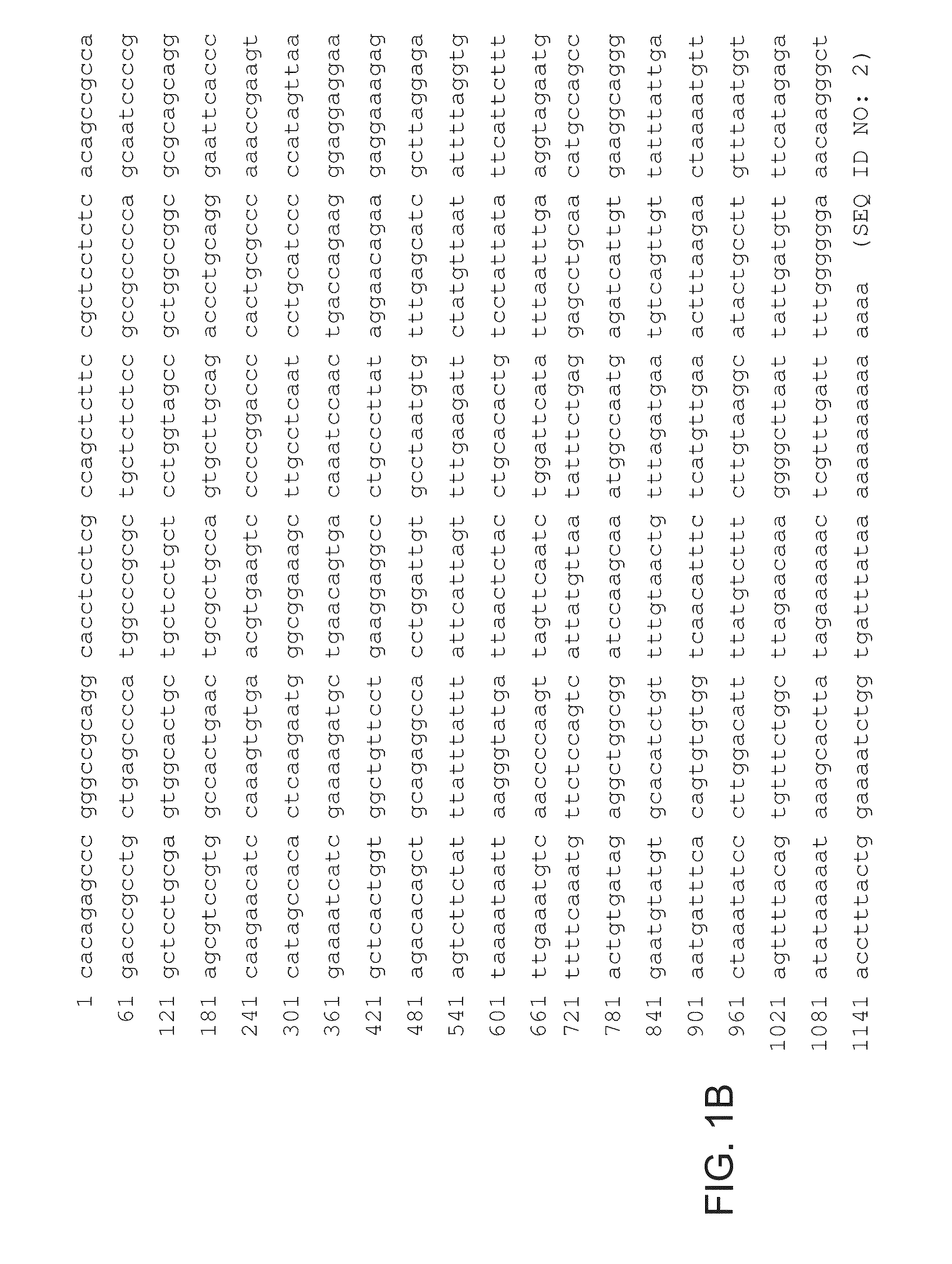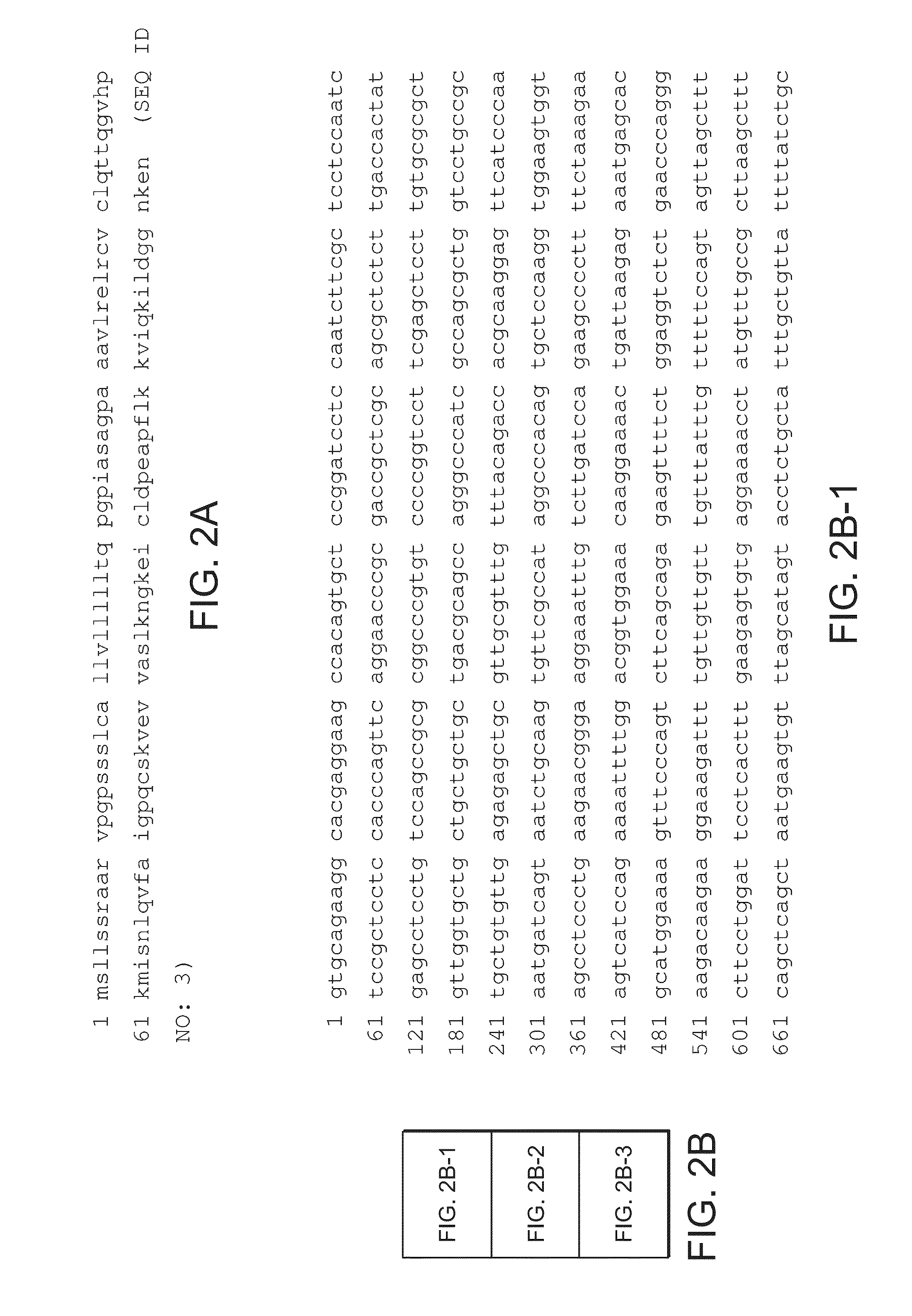Anti-tnf and Anti-il 17 combination therapy biomarkers for inflammatory disease
a combination therapy and inflammatory disease technology, applied in the field of inflammatory disease biomarkers, can solve the problems of inability to achieve significant reduction in disease activity in patients, inability to combine anti-cytokine therapies to achieve the effect of improving response and safety, and achieving the effect of lowing the expression of cxcl1 and/or cxcl5. marker, effective treatment of subj
- Summary
- Abstract
- Description
- Claims
- Application Information
AI Technical Summary
Benefits of technology
Problems solved by technology
Method used
Image
Examples
example 1
Efficacy of Anti-TNF and Anti-IL17, Alone and in Combination, in a Mouse Collagen Induced Arthritis Model
[0159]In this example, the efficacy of anti-TNF or anti-IL17, or a combination thereof, was evaluated in a mouse model of collagen-induced arthritis and the results are shown in FIG. 3. Male DBA / 1J mice were injected i.d. at the base of the tail with 100 μL of emulsion containing 100 μg of type II bovine collagen dissolved in 0.1N acetic acid and 100 μL of Complete Freund's Adjuvant containing 100 μg of Mycobacterium Tuberculois H37Ra. Mice were boosted 21 days later i.p. with 1.0 mg zymosan A in 200 μL of phosphate buffered saline (PBS). Disease onset occurred within 3 days of the boost. Mice were monitored for arthritis daily for the first week and three times per week thereafter. Each paw was scored by the following criteria: 0=normal; 1=swelling in one site, foot or ankle; 2=swelling in foot and ankle; 3=ankylosis. Scores were summed for all 4 paws of each animal (maximal sco...
example 2
Comparison of Bone Protection by Anti-TNF and Anti-IL17, Alone and in Combination, in a Mouse Collagen Induced Arthritis Model
[0160]In this example, the greater efficacy of the combined blockade of TNF and IL17 is demonstrated on protection from bone loss and is shown in FIG. 4. Arthritis was induced in the DBA / 1J mice as described in Example 1. The level of bone loss was evaluated at the termination of the study, three weeks after onset of arthritic signs. The effect on protection from bone loss was measured in animals receiving therapeutic treatment regimen. Hind paws were removed at the middle of the tibia / fibula and stored in 10% neutral buffered formalin. Paws were imaged using a Scanco μCT40 (Scanco Medical AG) at 55 kVp and 145 μA, utilizing the High Resolution setting (1000 Projections / 180° at 2048×2048 Pixel Reconstruction) and Isotropic Voxels with 180 millisecond integration time, resulting in a final isotropic voxel size of 18 μm×18 μm×18 μm. A cylindrical contour was ma...
example 3
TNF and IL17 Interaction in CIA and RA
[0161]In this example, gene expression profiling was used as a tool to study biomarkers that reflect the cooperative action of anti-TNF and anti-IL17 therapies. In this case, an 8C11 antibody was used as the anti-TNF therapy and a rat anti-mouse anti-IL17 antibody, MAB421, was used as the anti-IL17 therapy, unless otherwise noted. Using art-known methods, the responses of disease related RNAs were characterized and a cohort that was sensitive to combined anti-TNF and anti-IL17 therapy but substantially less sensitive to anti-TNF or anti-IL17 monotherapy was identified. CXCL1 and CXCL5 were identified as biomarkers because they are stable over time in an easily accessible biological fluid requiring minimal preparation or handling at the clinical site. Using a collagen-induced arthritis (CIA) model in mice, measurements of CXCL1 and CXCL5 biomarkers in whole paw homogenates indicated that a change in RNA level was a good predictor of protein level...
PUM
| Property | Measurement | Unit |
|---|---|---|
| size | aaaaa | aaaaa |
| Northern blot analysis | aaaaa | aaaaa |
| equilibrium dialysis | aaaaa | aaaaa |
Abstract
Description
Claims
Application Information
 Login to View More
Login to View More - R&D
- Intellectual Property
- Life Sciences
- Materials
- Tech Scout
- Unparalleled Data Quality
- Higher Quality Content
- 60% Fewer Hallucinations
Browse by: Latest US Patents, China's latest patents, Technical Efficacy Thesaurus, Application Domain, Technology Topic, Popular Technical Reports.
© 2025 PatSnap. All rights reserved.Legal|Privacy policy|Modern Slavery Act Transparency Statement|Sitemap|About US| Contact US: help@patsnap.com



